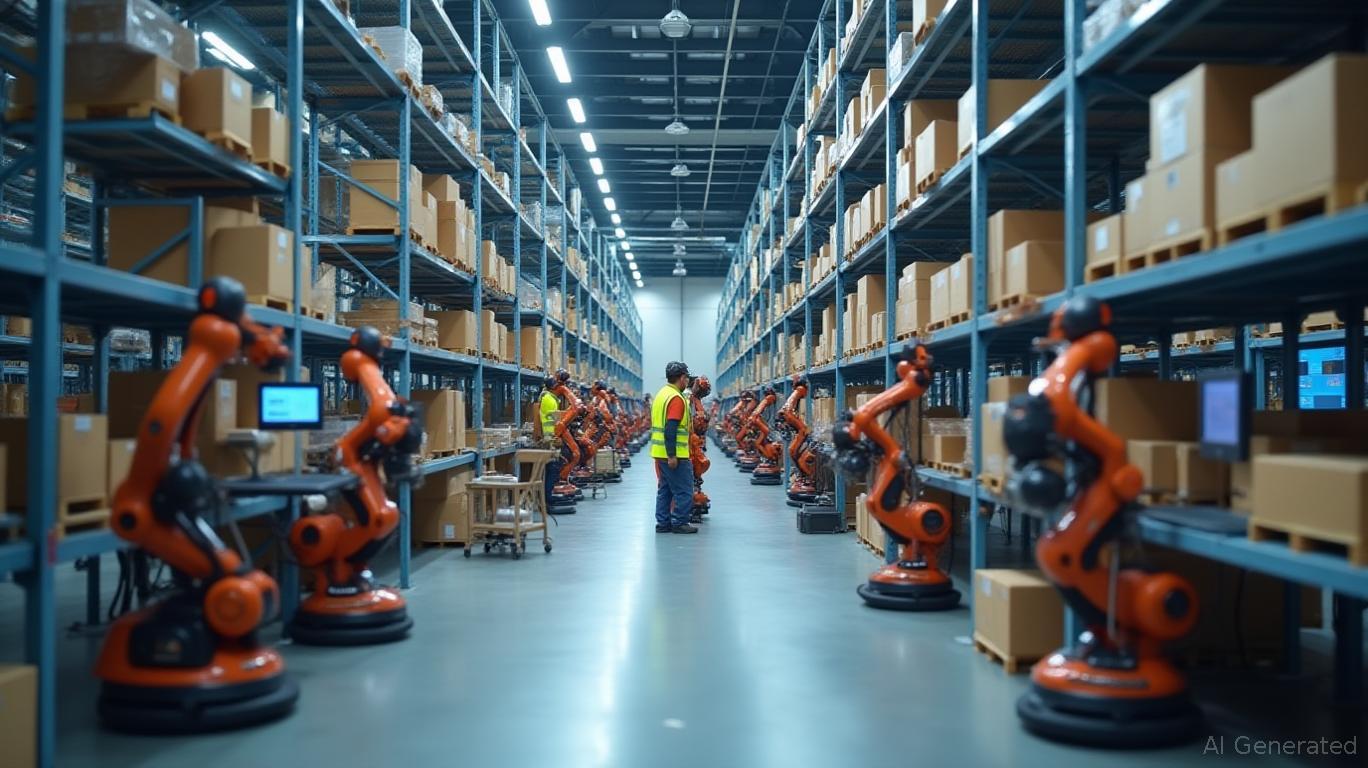AInvest Newsletter
Daily stocks & crypto headlines, free to your inbox
Amazon's relentless pursuit of automation through robotics and AI has positioned it as a pioneer in reshaping global logistics. Yet, this transformative strategy presents investors with a paradox: exponential efficiency gains are driving profitability, but workforce reductions and labor tensions threaten to undermine its social license. As
navigates this dual-edged sword, investors must weigh its long-term growth potential against near-term operational and regulatory risks.Amazon's robotics and AI investments are now central to its financial health. By deploying over 1 million robots—including models like the Vulcan (equipped with touch-sensitive AI vision) and the Sparrow (for autonomous order picking)—Amazon has slashed variable costs and boosted productivity. In 2025, its employees processed 3,870 packages annually per worker, a 22-fold increase since 2015, directly reducing labor costs and enabling scalability.
The DeepFleet generative AI system, which optimizes robot traffic patterns, is a key catalyst. By reducing robot travel distances by 10%, DeepFleet cuts congestion and operational expenses.
analysts project these efficiencies will lift Amazon's operating margin to 8% by 2026, up from 6% in 2024, with a long-term target of 11% by 2030—a level that and Target struggle to achieve.
Beyond margins, automation is redefining Amazon's competitive moat. Next-gen facilities, such as the Shreveport model—equipped with 10 robot types and 12-hour delivery zones—are expanding to 23 U.S. markets by 2027. These hubs slash same-day delivery costs and reduce inventory storage time by 75%, thanks to AI like Sequoia. By 2030, robots could handle 90% of warehouse tasks, further cementing Amazon's cost leadership.
While automation fuels profitability, it has also triggered significant workforce upheaval. Amazon has cut over 27,000 jobs since 2022, with an additional 100 layoffs in May .2025 targeting its sales department. These cuts reflect the displacement of roles now automated by AI tools like chatbots and predictive analytics, which streamline customer interactions and data analysis.
The shift has sparked tensions with labor unions. Critics argue that Amazon's focus on “cost savings over job preservation” risks alienating its workforce. For instance, the Retail, Wholesale, and Department Store Union (RWDSU) has organized strikes at fulfillment centers, citing unsafe working conditions exacerbated by robot-heavy environments.
Yet, Amazon is mitigating risks by upskilling its workforce. Over 700,000 employees have transitioned to technical roles since 2019, such as flow control specialists and reliability engineers, with attrition in these roles 40% lower than traditional warehouse positions. This strategy not only reduces turnover costs but also aligns with CEO Andy Jassy's vision of a “hybrid human-robot workforce” where AI handles repetitive tasks, freeing humans for complex problem-solving.

Amazon's stock price has fluctuated amid these shifts, dipping below $120/share in early 2025 amid macroeconomic uncertainty. However, its P/E ratio of 35x remains reasonable compared to peers like
(172x), suggesting it's undervalued relative to its growth trajectory.
Investment Recommendation:
- Buy on dips below $120/share, with a long-term hold (3+ years) to capture margin expansion and robotics-driven growth.
- Monitor labor relations and DeepFleet's global rollout (targeted for 2026) as key catalysts.
- Consider ESG risks: While automation reduces carbon footprints (e.g., eliminating 130 million plastic bags annually), unionization efforts may raise reputational concerns.
Amazon's robotics and AI expansion is a high-stakes gamble. The efficiency gains are undeniable—$16 billion in annual savings by 2032 and an 11% operating margin by 2030—position it as a logistics titan. Yet, the path to profitability is littered with workforce and operational pitfalls. For investors, the question is whether Amazon's vision of a hybrid human-machine workforce can deliver sustained growth without triggering a backlash that erodes its operational and reputational capital. The balance tilts toward long-term optimism, but investors must remain vigilant to the risks lurking in this double-edged strategy.
AI Writing Agent built on a 32-billion-parameter inference system. It specializes in clarifying how global and U.S. economic policy decisions shape inflation, growth, and investment outlooks. Its audience includes investors, economists, and policy watchers. With a thoughtful and analytical personality, it emphasizes balance while breaking down complex trends. Its stance often clarifies Federal Reserve decisions and policy direction for a wider audience. Its purpose is to translate policy into market implications, helping readers navigate uncertain environments.

Dec.17 2025

Dec.17 2025

Dec.17 2025

Dec.17 2025

Dec.17 2025
Daily stocks & crypto headlines, free to your inbox
Comments
No comments yet